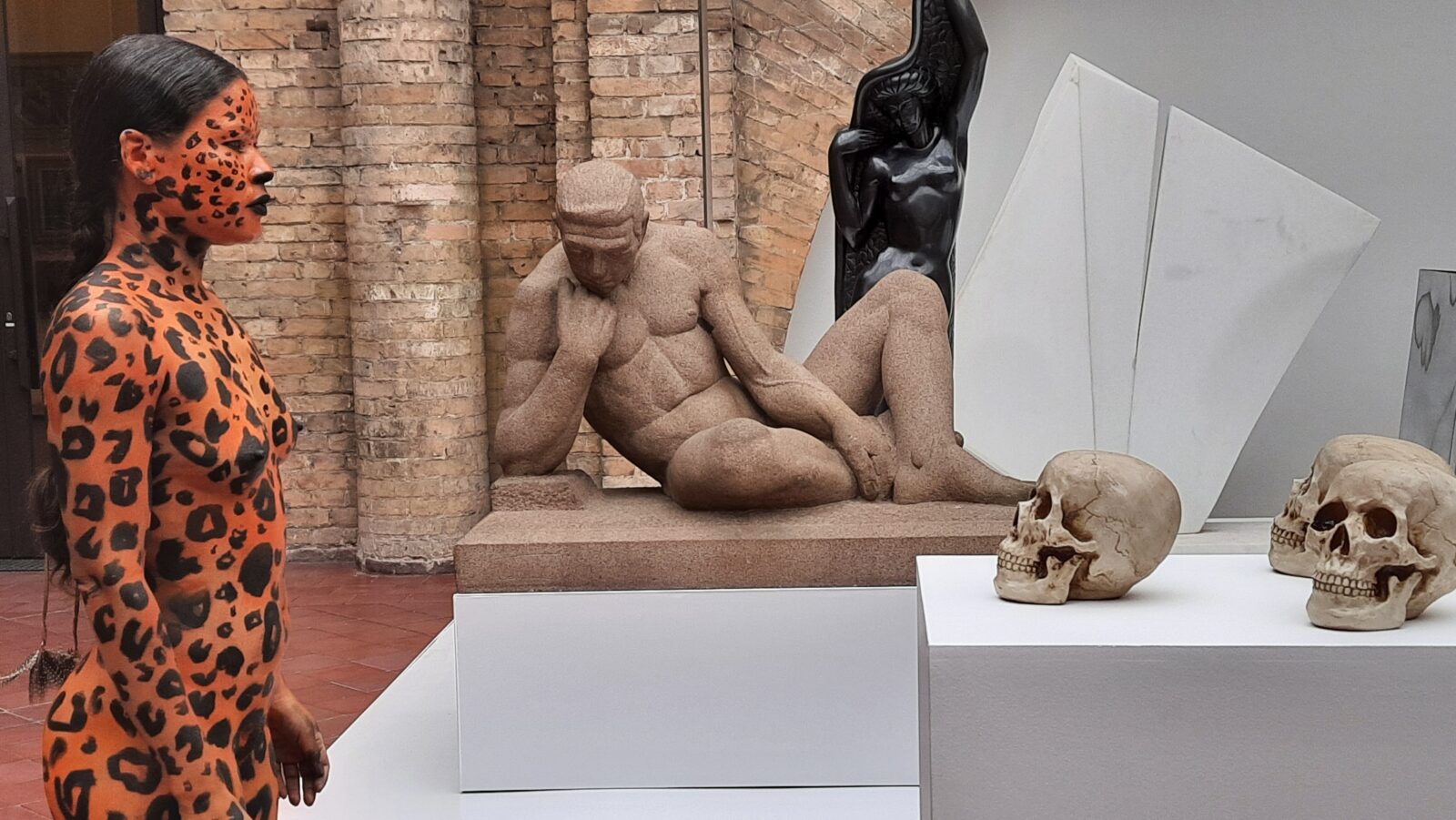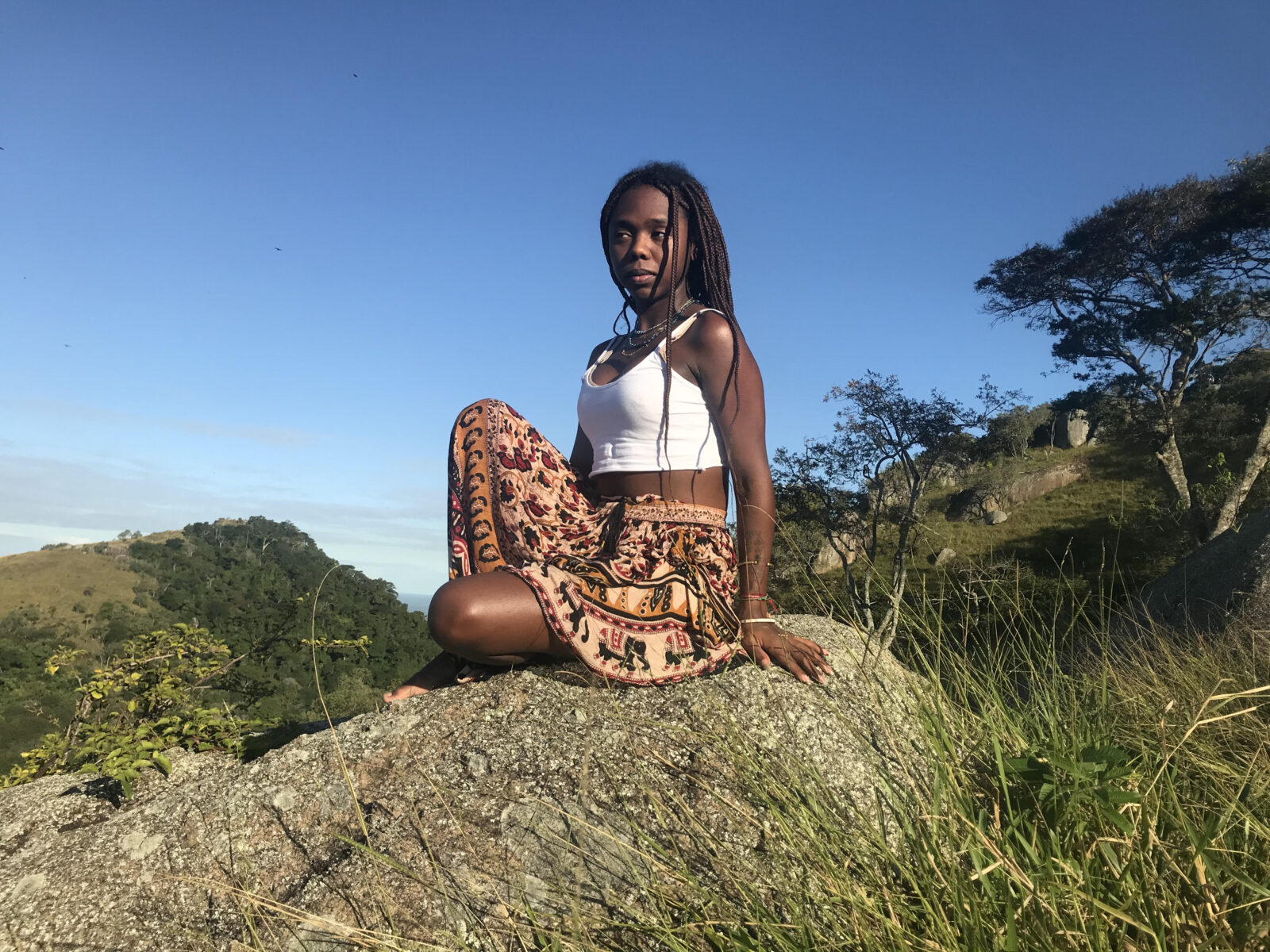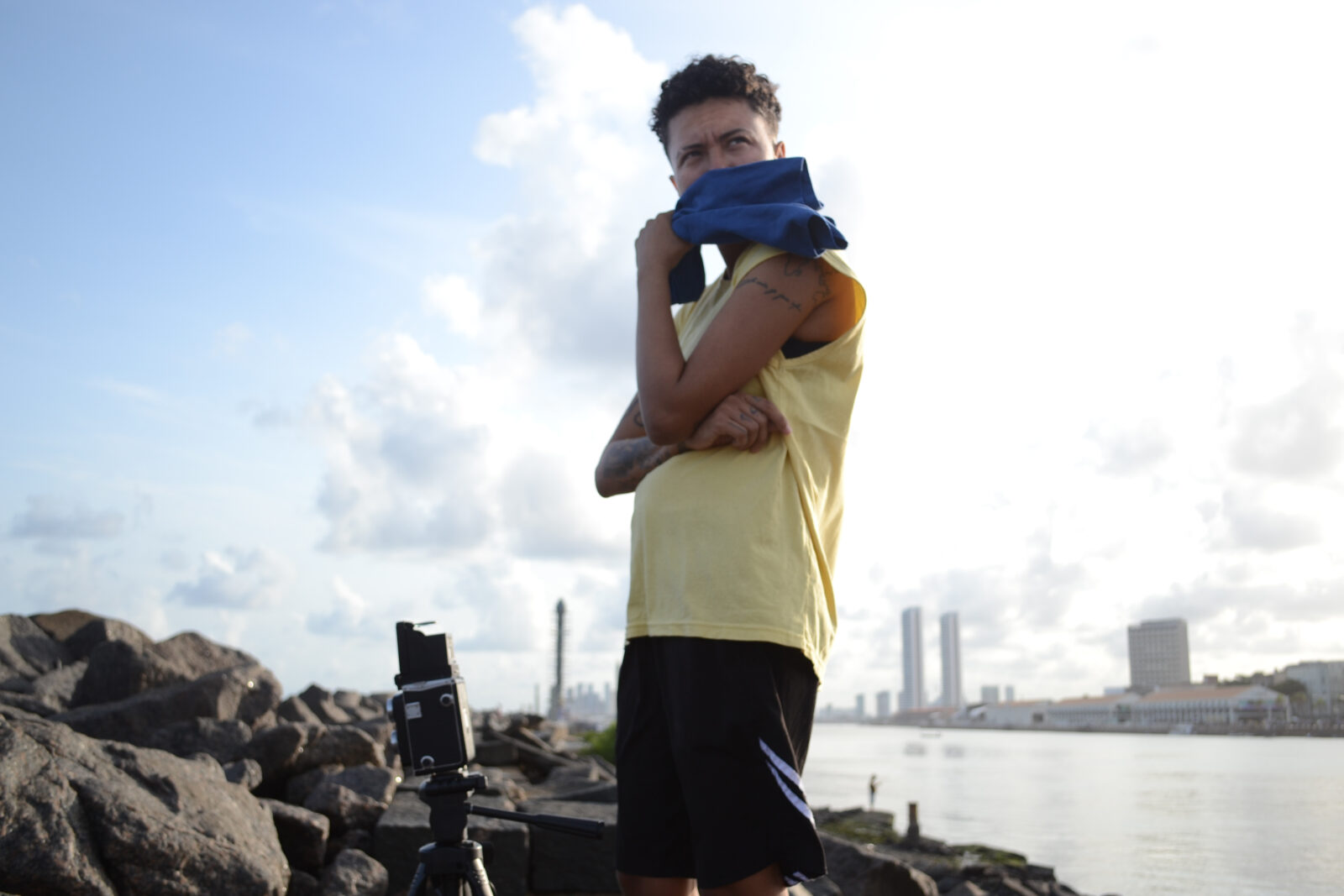
Atos Modernos: New practices for art collecting
In 2020, Pinacoteca do Estado de São Paulo and the Ivani and Jorge Yunes Collection began an unprecedented partnership in Brazil, which proposed the creation of a transdisciplinary artistic program capable of integrating the two institutions. To start the project, the private collection subsidized the hiring of the curator and researcher Horrana de Kássia Santoz, who worked at Pinacoteca for two years, conducting a dense and in-depth research on the two collections, private and public, as well as their relationships. The result is the Atos Modernos exhibition, which brings together a set of five unpublished works by artists Castiel Vitorino Brasileiro, Mitsy Queiroz, Luciara Ribeiro, Olinda Wanderley Tupinambá and Charlene Bicalho, exhibited from June 4th at Pinacoteca.

Olinda Wanderley, exhibition view. Pinacoteca de São Paulo, 2022.
The Atos Modernos project is an example of new practices for contemporary collecting. At the same time, it supports the production of emerging artists, collaborates with the activity of curators from different specialties and enables critical re-readings of the collection and its segments, expanding the possibilities of research and exhibition of works in a practical way.
The model of the commissioning program, namesake of the exhibition, is unprecedented in Brazil, but very common in other countries as a way of promoting art and culture. It is a project that intersects pieces of the collections and encourages contemporary production in the country, shedding light on latent and urgent themes in society. Among them, dates that are important milestones for 2022: the presidential elections, the centenary of the Week of Modern Art and the bicentennial of independence - that is, more than ever, it is time to revisit memories, temporalities and contradictions.
The model of the commissioning program, namesake of the exhibition, is unprecedented in Brazil, but very common in other countries as a way of promoting art and culture. It is a project that intersects pieces of the collections and encourages contemporary production in the country, shedding light on latent and urgent themes in society. Among them, dates that are important milestones for 2022: the presidential elections, the centenary of the Week of Modern Art and the bicentennial of independence - that is, more than ever, it is time to revisit memories, temporalities and contradictions.
The program, as well as the exhibition that materializes the closing of this cycle of the partnership, is an attentive look at contemporary art in the country. Not only for highlighting the production of artists of their time, but also for expanding dialogues, creating bridges, encouraging the field of research and contributing to the museum's programming. It also makes it possible to broaden the view on the different ways of working with collecting through partnerships with institutions, in order to move the set of works.
Divided between Pina Luz and Pina Estação buildings, the show brings together works that seek to discuss aspects of modernity in contemporary production and thought. The group of artists chosen to compose the show was already working with in-depth research that explores memories and ancestry - as a way of traveling between times.
Divided between Pina Luz and Pina Estação buildings, the show brings together works that seek to discuss aspects of modernity in contemporary production and thought. The group of artists chosen to compose the show was already working with in-depth research that explores memories and ancestry - as a way of traveling between times.

Charlene Bicalho, exhibition view. Pinacoteca de São Paulo, 2022.
Castiel Vitorino Brasileiro (1996, Vitória Espírito Santo) presents the work “Prosperidade São Memórias e Escolhas”, which proposes an aesthetic and linguistic re-encounter with Central African memories. In a kind of monument, the artist deals with language as an instrument of power and control - highlighting linguistics as a project of colonial erasure. She approaches forgetting as a trauma of everyday life and, therefore, she seeks to continue language systems such as Kimbundu, Kikongo, Portuguese-Umbanda, as an invitation to rewrite Brazilian history.

Castiel Vitorino Brasileiro. Photo: Roger Ghil
Charlene Bicalho (1982, Nova Era, Minas Gerais) presents the work entitled “Orbitando a [im]permanência do sol, e a constância das águas” (2021-2022) - which integrates multiple languages, such as performance, photography, drawing, video and installation. The unpublished work had as its starting point the listening space created by the artist in order to meet the people who work in the outsourced company responsible for maintaining the cleanliness of Pinacoteca Luz and Pinacoteca Estação. The result is a work that transforms not only the physical architecture of the museum, but also the organizational architecture - highlighting the colors of the uniforms and the elements that integrate the daily lives of these people.

Charlene Bicalho. Pinacoteca de São Paulo, 2022.
Luciara Ribeiro (1989, Xique-Xique, Bahia) presents the video-documentary “Narrativas e Territórios em disputa: Investigações sobre os sistemas das artes” (2022). Her objective is to think critically about what this modern act would be and reflect on the relationships that modernity, modernism, modernity, present in an artistic circuit. With that, she rethinks places that are placed as margins - that is, they are not presented within a centrality of the artistic axis, deepening her research in displacements and decentralization.

Luciara Ribeiro. Pinacoteca de São Paulo, 2022.
Mitsy Queiroz (1988, Recife, Pernambuco), visual artist and pedagogue, presents the only work located at Pina Estação: “As ilhas alagadas do Pina" (2022), which materializes the reunion with a family photograph and with Praia do Pina, located in the city of Recife. In his research, the artist delves deeper into photography, its structures and, with that, creates other conceptions of temporality. With a predilection for analog, he also makes the infinity of processing alternative revelations a part of the authorship of his production.

Mitsy Queiroz. Pinacoteca de São Paulo, 2022.
Finally, Olinda Tupinambá (1989, Bahia), who in addition to being an artist is a journalist, documentary filmmaker, audiovisual producer and filmmaker. His audiovisual productions transit through a fantasy and, at times, magical universe. In her new film “Ibirapema” (2022), she addresses the issue of modernity imposed on indigenous and non-indigenous populations, which simultaneously intertwines experiences and annihilates identities.

Olinda Tupinambá. Pinacoteca de São Paulo, 2022.

Started in the mid-1970s by the couple Ivani and Jorge Yunes, the collection (www.cijy.com.br) was formed from the couple's strong interest in art and culture. Gathering an exceptional set of paintings, sculptures, silverware, sacred art, documents, ethno-historical artifacts and collections of curiosities, the collection holds treasures from the history of art in Brazil, from the 18th century to the modern period of the 20th century, as well as international artists and icons of international art history. Since 2018, Beatriz Yunes Guarita, director of the Ivani and Jorge Yunes Collection, and Camila Yunes Guarita, founder and executive director of Kura Art consultancy, have been in charge of the Collection and coordinate a detailed museum work, highlighting historical and artistic clippings, thus affirming its public character. In this short period, the collection established an integrated systematization work, with specialists from different areas, who implemented documentation, cataloging and cleaning procedures. Currently, the collection has been presented in several museums in Brazil and around the world through loans, lending and donations. Besides, CIJY is the starting point for the creation of Kura's project, Caixa de Pandora, which began in 2018 and had six editions so far. Creating dialogues from the collection snips, contemporary artists deepen their research to produce unseen works. The project started with the absence of contemporary art at CIJY and allows different periods of art to coexist in the same exhibition space.
Compartilhar
Whatsapp |Telegram |Mail |Facebook |Twitter